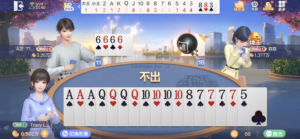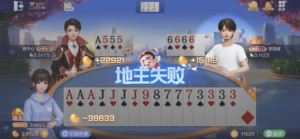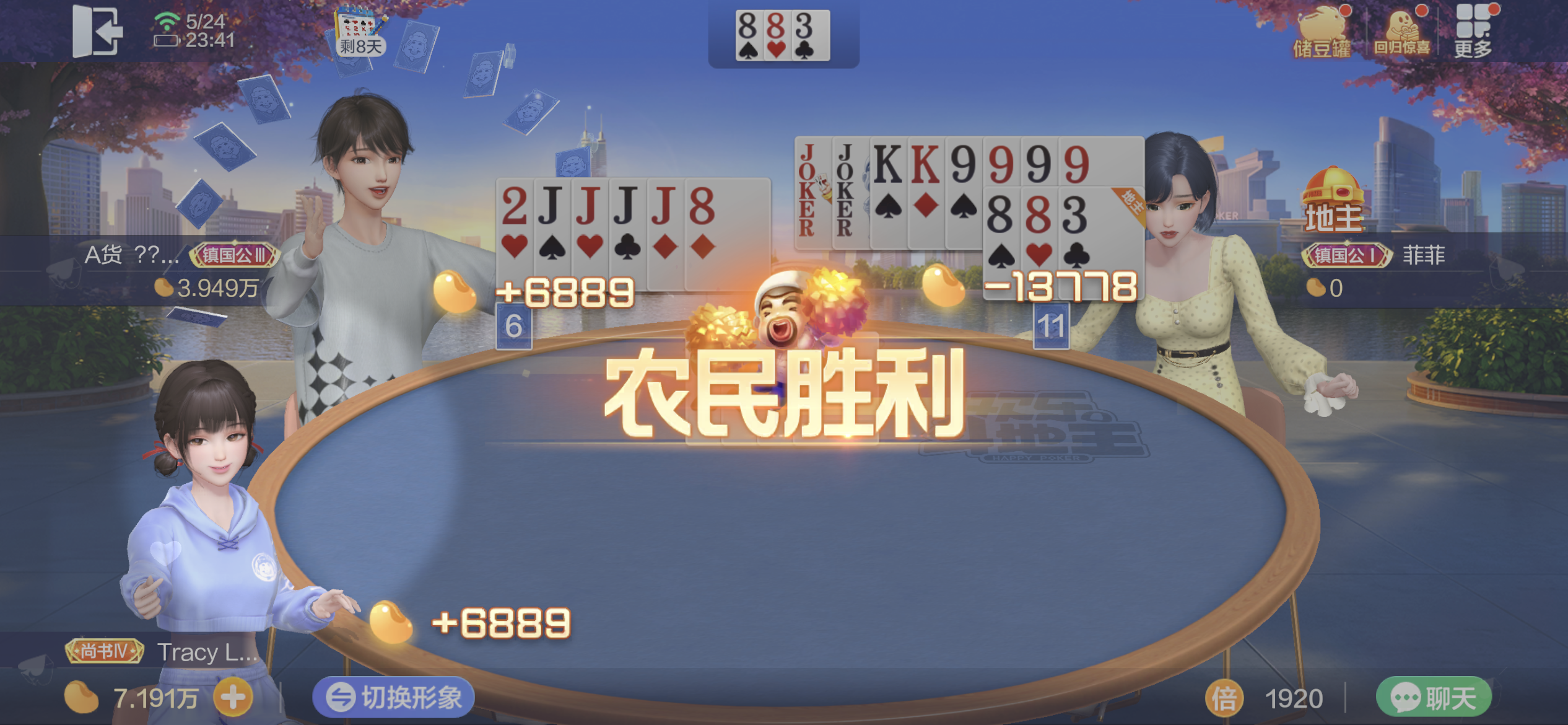“Fight the Landlord,” developed by Tencent and accessible on various digital platforms, is an enthralling synthesis of chance and strategy that draws players into a dynamic landscape of potential gains and losses.
Mechanically, the game falls under the category of multilateral competition, wherein two to four people vie against each other, each striving to outwit their opponents and triumph. The core objective is essentially to outwit others, resembling traditional card games with a hint of strategic complexity. Here, luck plays a significant role, but player strategy often serves as the deciding factor.

Caption: Playing “Flight the Landlord” with strangers together online.
The game also encourages fellowship, another type of fun, via the chat and emoji functions that allow players to express their thoughts and emotions, fostering a sense of community within the game. This layer of social interaction, coupled with the excitement of competition, amplifies the engagement that goes beyond the game’s mechanics.
From the perspective of a game designer and a player, I’ve found that the game’s structure offers fascinating insights into the intersection of randomness, player psychology, and game design. However, it also illuminates the pitfalls and challenges intrinsic to designing games of chance.
When I played “Fight the Landlord,” I noticed an interesting dichotomy in my perceptions. Victories felt like a testament to my strategic prowess, while defeats often seemed to be the result of draws, rather than my missteps. This cognitive bias, known as self-serving bias, is common in games of chance and can amplify the addictive qualities of the game.

Caption: A challenging moment in ‘Fight the Landlord,’ leading to an impression of unfavorable card draws, blurring the lines between luck and skill.
Another captivating aspect of “Fight the Landlord” is the palpable tension that pervades each round. The suspense is heightened by the game’s music, which, when combined with the unpredictability of the card draw, creates a potent cocktail of anxiety and excitement. This emotional experience can lure players into a repetitive cycle of play in the pursuit of the elation that comes with victory.

Caption: A victorious moment in ‘Fight the Landlord,’ leading to an illusion of strategic mastery.
The ability of players to express their thoughts and emotions through chat and emojis introduces a social dynamic that can further intensify the game’s addictive potential. The sense of community, competition, and the shared experience of the highs and lows of the game add layers of engagement that go beyond the game’s mechanics.
Comparatively, “Fight the Landlord” bears similarities to popular American poker games, such as Texas Hold’em, where luck and strategy coexist. However, the social aspects of ‘Fight the Landlord,’ such as the chat and emoji functions, make it uniquely interactive and emotionally engaging.
While these elements contribute to the game’s allure, they also raise important concerns. From a design perspective, it’s crucial to balance engagement and addiction potential carefully. Games of chance, due to their unpredictable nature and the thrill they offer, can lead to compulsive playing behaviors. Thus, designers need to implement safeguards, such as gameplay time limits or reminders to take breaks, to mitigate these risks.
Moreover, the game could benefit from certain improvements. For instance, adjusting the mechanics to lessen frustration stemming from unfavorable card draws could enhance the player experience. Also, chat moderation would be advisable to prevent potential misuse.
In conclusion, “Fight the Landlord” provides valuable lessons in the use of randomness and tension to deliver an engaging and exciting game experience. Yet, it also underscores the importance of mindful game design that equally considers the player’s psychological welfare.




